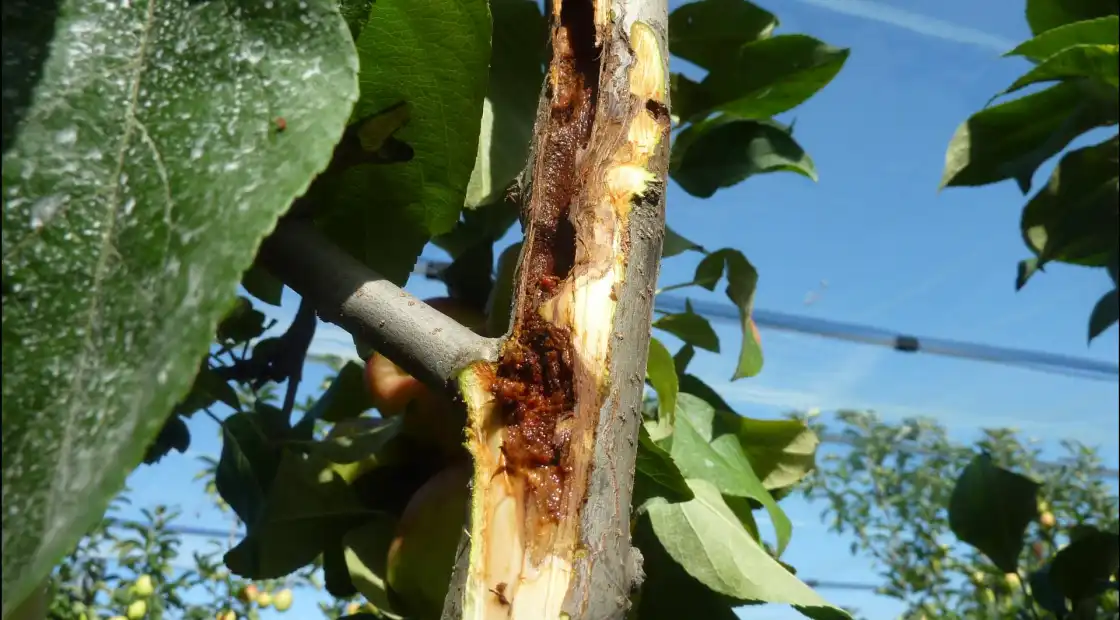characteristics and life cycle of the zeuzere
During a presentation at SIVAL 2024, we explained the specific characteristics of the zeuzère, a xylophagous insect belonging to the Lepidoptera family. Also known as the "leopard myth" in England or the "coquette" in France, the zeuzere is a pest known for its damage to various types of fruit trees, including apples, pears, cherries, plums, peaches and apricots. This polyphagous insect, capable of spreading over 150 species, is highly opportunistic and proliferates in favorably warm environmental conditions. Native to Europe, it has also been exported to South Africa and North America.
The main developmental stages of the zeuzere, from egg to adult, vary according to climatic conditions. Females, equipped with an ovopositor, lay between 400 and 1000 eggs, usually in small clusters. These clutches, influenced by temperature, hatch rapidly when conditions are warm or, on the contrary, are delayed when they are colder. The larvae, reaching a size of up to 5 cm, enter young shoots, branches and tree trunks to feed. In cooler climates, it can extend its development cycle by up to two years. The adult lives between 7 and 15 days, and reproduces mainly at night.
damage recognition and detection methods for zeuzers
Damage caused by zeuzere can be seen at different stages of its cycle. Young shoots are often affected first, giving the impression of breakage due to wind or other external causes. This stage is known as the leafminer phase. The more the larva develops, the more extensive and visible the damage becomes, with sawdust dripping or perforation marks on branches and trunks. These signs enable growers to identify the presence of the pest and initiate appropriate control measures.
Specific traps can be used to detect zeuzere populations. These include pheromone diffusers installed at the periphery of orchards to avoid concentrating egg-laying within plots. Visual counts can be carried out between July and October, when signs such as wilted shoots or desiccated branches are most noticeable. The effectiveness of these monitoring methods varies according to the pest threshold, which is classified as low, medium or high depending on the proportion of trees affected.
Control strategies and innovations in integrated pest management
Several approaches are available to effectively manage zeuzere populations. Sexual confusion with products such as Ginko ® Z, registered by Sumiagro, is a preventive solution designed to disrupt male mating. With 300 sprays per hectare, this method greatly reduces egg-laying and the destruction caused by larvae. However, this technique requires a minimum of 2 hectares to be optimized.
In terms of chemical control, bacillus thuringiensis remains the only larvicide approved for this pest. Its application, programmed according to flight and hatching cycles, proves highly effective when used at the right time. Finally, mechanical interventions such as capturing larvae with wires or cutting off affected branches provide timely but time-consuming solutions. Prospects for improvement also include the use of natural predators such as chickadees, which have shown themselves capable of consuming the larvae, although regulations on the introduction of beneficial insects remain very strict.
